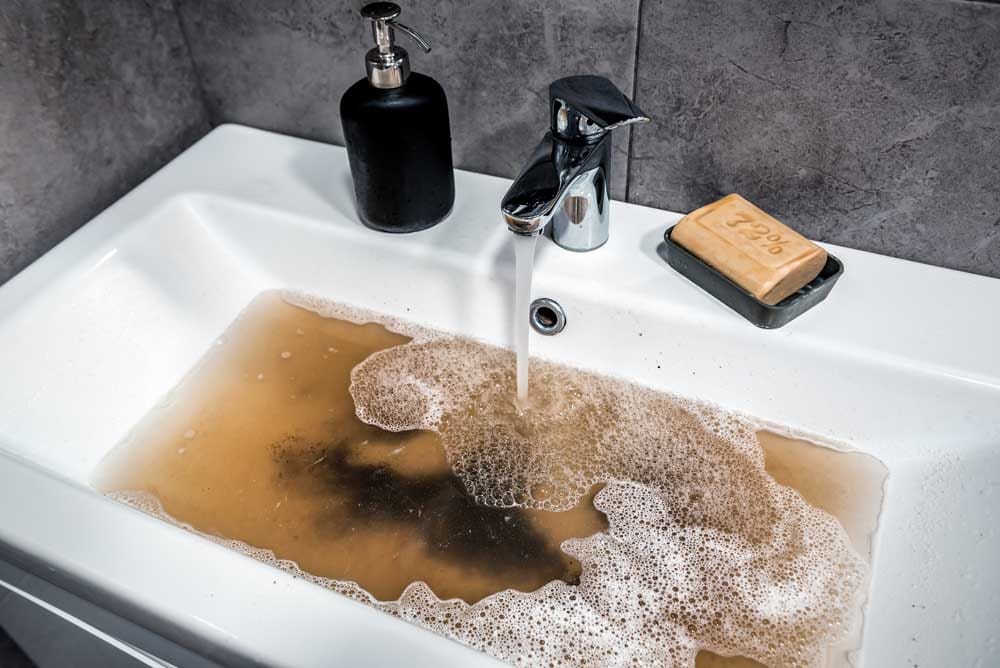Ready to fix that clogged drain?

- Ready to fix that clogged drain?
- Introduction – How To Unclog a Drain Without a Plumber
- Tools You May need – How to Unclog a drain
- Step 1: Identifying your drain clog
- Step 2: Start Clearing the Clogged Drain
- Step 3: Ramp Up Your Drain Fix (If Needed)
- Step 4: Prevent Clogged Drains Going Forward
- FAQ – How to Unclog a drain
Introduction – How To Unclog a Drain Without a Plumber
So, you want to know how to unclog a drain? Has a stopped up drain halted your water flow? Maybe your shower’s draining slow. Or your sink’s backing up bad. Don’t freak out yet! Fixing a clogged drain is totally doable. In fact, it just takes a few steps. So, you can handle a clogged shower drain yourself. Plus, clear a clogged sink drain too. With our guide, you’ll unclog it fast. Then, water runs smooth again! But wait—let’s talk prevention next. Because clogs are the number one charge renters face from property owners.
For instance, be mindful what goes down. Hair’s a big culprit always for a clogged drain. So, use a hair catcher in the shower. It snags strands before they sneak in. Also, don’t wash food scraps down the sink. That grease and gunk build up quick. Instead, toss leftovers in the trash first. By staying smart, you dodge landlord fees. Plus, you keep your deposit safe. Who doesn’t want that win?
Tools You May need – How to Unclog a drain
- Hair Catcher – For Stopping Drain Clogs
- Zip Stick – Easy affordable snaking solution
- Screwdriver – Combination screwdriver
- Flashlight – Scope the dark with this LED flashlight
- Needle-Nose Pliers – For grabbing hair or objects
- Drain Cleaner – Chemical solution for removing blockages
- Drain Snake – For tough Clogs
(Links posted are affiliate sponsored Links and purchases directly support our operation. We stand behind the products we recommend)
Step 1: Identifying your drain clog
Start your DIY home repair by pinpointing the source of your drain clog to make the process of learning how to unclog a drain more efficient. Begin by inspecting the strainer in your shower or sink. Is hair tightly tangled around it? Shower drains often catch strands easily, so try pulling the hair out with your fingers or a pair of tweezers—sometimes this simple step can resolve a clogged drain.
Next, if you’re working on a bathroom sink, lift the pop-up drain stopper by twisting or pulling it out (check your model for specific removal instructions). Inspect it closely—do you see gunk like soap residue or hair buildup? If so, rinse the stopper thoroughly under warm water to clean it, and set it aside. Then, move on to the P-trap, the U-shaped pipe beneath the sink that often traps grease, soap scum, or small debris, contributing to clogged drains. Place a bucket underneath to catch any water, and unscrew the P-trap carefully by hand or with a wrench if it’s tight.
Be prepared for a strong odor, as a foul smell can indicate significant buildup inside. Clear out any debris you find, rinse the P-trap, and reattach it securely. If the water still doesn’t drain after these steps, the clogged drain is likely deeper in the plumbing system, beyond the P-trap. At this point, the blockage might be in the main drain line or further down the pipes, requiring tools like a drain snake or a plunger to dislodge the mess. Older pipes might have accumulated more buildup over time, making clogged drains more stubborn to fix.
BoomTip – How to unclog a drain : A Hair catcher is a great way to prevent clogs and save money in repair charges

Step 2: Start Clearing the Clogged Drain
Now that you’ve identified the issue, let’s tackle how to fix a drain by clearing the blockage step by step. The method differs slightly depending on whether you’re dealing with a bathroom sink or a shower drain.
For a Clogged Bathroom Sink: Begin by lifting the pop-up stopper to address the clogged drain. Locate the little lever under the sink—it’s usually a rod connected to the stopper. Push it up gently with your hand to release the retaining nut, then unscrew it to remove the pop-up. The stopper should pop out easily. Inspect it closely: is there slimy hair wrapped around it, or perhaps some gunky soap buildup? This is often the cause of a clogged drain. Grab the debris with your fingers (yes, it’s a bit gross!) and pull off as much as you can, wiping it onto a paper towel. Reinsert the stopper and test the drain with running water.
Still no flow? Don’t worry—reach for a zip stick, a long, flexible tool with barbs designed to grab debris. Slide it into the drain slowly, pushing it past the curve of the pipe. If you feel resistance, twist the stick slightly to snag the blockage, then pull it back up carefully. Check what comes out—likely more hair or gunk! Run hot water to flush the drain, then reassemble the stopper in reverse order. If the sink still isn’t draining, move on to Step 3 to tackle a deeper clogged drain.
For a Clogged Shower Drain: Switch to a different approach for a drain clog in the shower. Grab a pair of needle-nose pliers to start. Look at the drain strainer—do you see hair poking out? Use a flat-head screwdriver to unscrew the drain cover and set it aside. Pinch the visible hair with the pliers, twisting your wrist gently to grab as much as possible, then pull it up steadily. You’ll likely see a nasty clump come free—drop it in the trash quickly.
Don’t have pliers? Use a zip stick instead; it’s an affordable tool that works well. Feed it into the drain slowly, wiggle it around, and pull it out gently—hair and soap scum should snag on it. Test the drain by running water afterward. If it flows freely, great job! (Consider buying a hair catcher to prevent future clogged drains.) If it’s still blocked, proceed to Step 3 for more advanced techniques to fix the clogged drain.

Step 3: Ramp Up Your Drain Fix (If Needed)
For a Clogged Bathroom Sink: Start by placing a bucket under the sink to catch any water. Position it directly below the P-trap, the U-shaped pipe that retains water to block sewer gases but often traps debris, causing a clogged drain. Unscrew the nuts on both ends of the P-trap using your hands or a wrench if it’s tight. The P-trap should drop into the bucket, spilling out any trapped water. Shine a flashlight inside the P-trap—do you see gunk, hair, or grease buildup?
Clean it out thoroughly, and if there’s a strong odor, rinse the P-trap in another sink with a bit of bleach to eliminate smells. Next, push a zip stick into the wall drain (the pipe opening in the wall) to check for deeper blockages. Twist it deeply to grab any remaining debris, then pull it out. If the drain still doesn’t flow, switch to a hand-operated drain snake—a must-have tool for any homeowner dealing with drains. Wear gloves for this step, as it can get messy. Feed the snake into the drain slowly, cranking it as you go to break through the clog, then pull it back out.
For a Clogged Shower Drain: For a shower with a persistent clogged drain, grab a hand-operated drain snake. Start by unscrewing the overflow cover, typically located on the front of the tub (it’s usually chrome and has one or two retaining screws). Remove the cover, then slide the drain snake down the overflow hole. Push it as far as it will go while cranking the handle to break up hair or soap buildup causing the clogged drain. Pull the snake back slowly and check what it snags—likely a mix of hair and gunk. Screw the overflow cover back on snugly, then test the drain by running water to see if it flows freely.
If Nothing Works: If neither method resolves the drain, don’t give up yet. Try using a drain cleaner, following the product’s instructions carefully, as chemicals can vary in application. Alternatively, give a plunger a shot—place it over the drain, ensure a good seal, and plunge vigorously for 30 seconds. If the water still won’t drain, it might be time to call a professional plumber to address a deeper issue in your plumbing system. But you’ve made a solid effort at tackling the clogged drain yourself—great work!

Step 4: Prevent Clogged Drains Going Forward
Now that your drain is clear, let’s focus on preventing clogged drains to avoid future hassles. You’ve already learned how to unclog a drain, so keeping it that way is key. Be mindful of what goes down your drains daily—don’t pour grease down the sink, as it solidifies and sticks to pipes, leading to a clogged drain. In the shower, install a hair catcher to trap strands before they sneak into the drain and cause clogged drains. Avoid flushing food scraps down the kitchen sink; toss them in the trash instead.
To maintain your drains, run hot water through them weekly to melt minor buildup, and consider flushing with a small amount of bleach monthly to keep pipes clean. Regular maintenance can stop a clogged drain before it becomes a major issue, saving you time and effort in the long run.
FAQ – How to Unclog a drain
What Are the First Steps to Take When You Have a Clogged Drain?
Start by checking the strainer for hair or debris, as showers often have clogged drains due to hair buildup. Remove any blockages, then inspect the P-trap under the sink to see if grease or soap scum is causing the clogged drain.
What Tools Do I Need to Unclog a Drain?
To master how to unclog a drain, you’ll need a plunger, zip stick, drain snake, needle-nose pliers, a bucket, and gloves. These tools help you clear a clogged drain efficiently, from surface blockages to deeper clogged drains.
Can I Use Natural Methods to Unclog a Drain?
Yes, a natural way to tackle a clogged drain is by pouring half a cup of baking soda followed by half a cup of vinegar down the drain. Let it sit for 15 minutes, then flush with hot water to clear clogged drains.
Why Does My Shower Keep Getting a Clogged Drain?
Showers often develop clogged drains because hair and soap scum build up in the strainer or P-trap. Use a drain cover to catch hair and clean the P-trap regularly to prevent a recurring clogged drain.
Check out our other Free home repair guides



